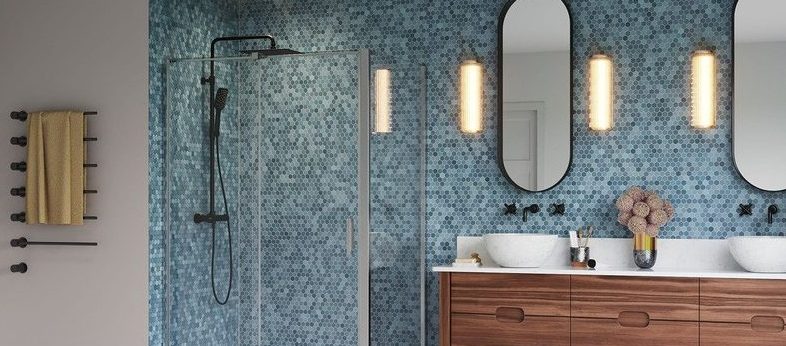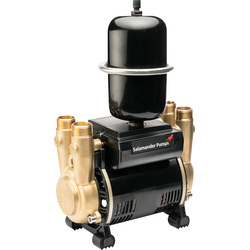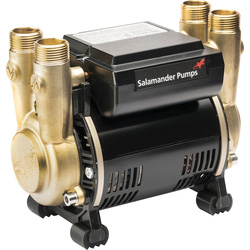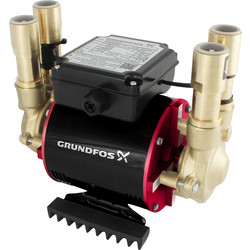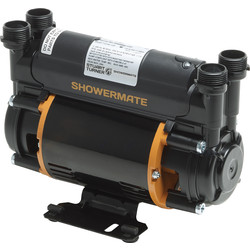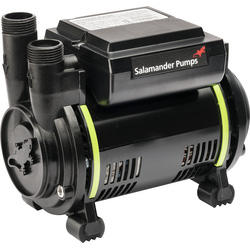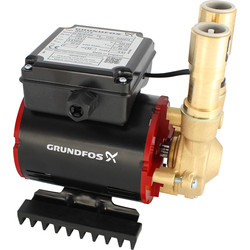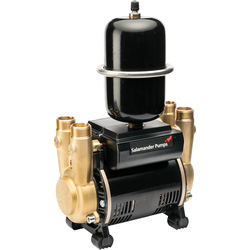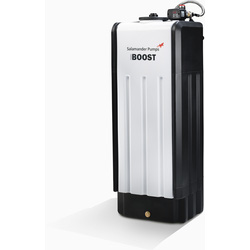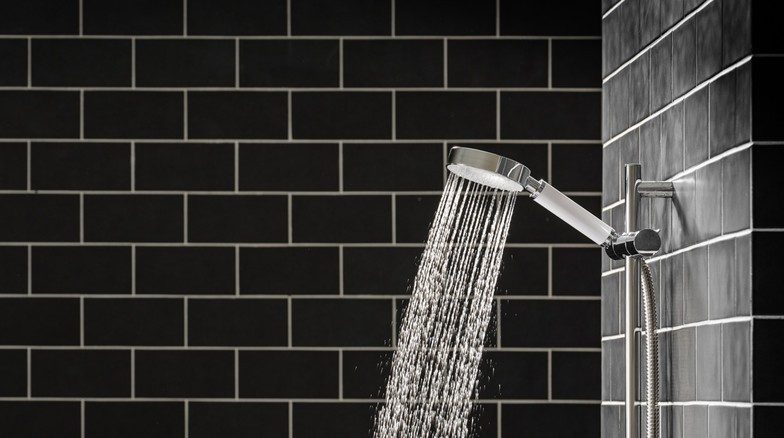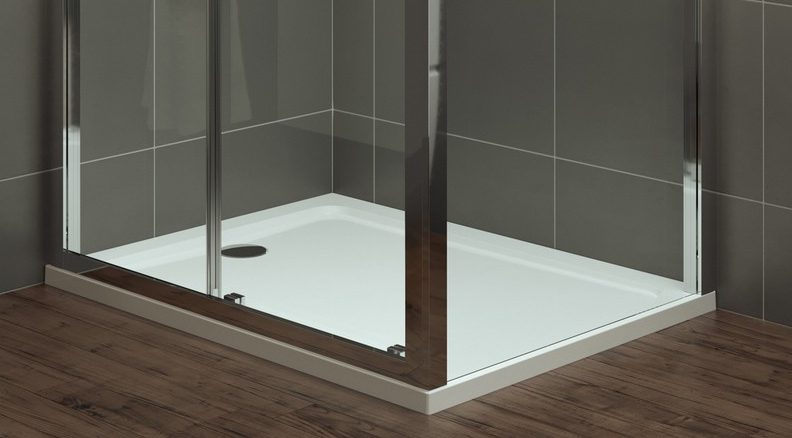Tired of weak water pressure while showering? A shower pump could be the solution you’re looking for. Designed to boost the water pressure from your shower head, a shower pump is a compact device that’s easily installed next to your hot water cylinder to the pipes that deliver water to your shower and taps around your home.
Shower pumps are only designed for gravity-fed systems, which means there is a hot water cylinder, usually in the airing cupboard, and a cold water tank in the loft. If you have a system like this, you probably have a heat-only boiler or system boiler. You cannot fit a shower pump if you have a combi boiler as the water pressure comes directly from the mains.
If you have a combi boiler, you’ll find mains booster pumps which are specially designed to increase the water pressure directly from the mains supply.
Types of Shower Pump Impellers
If you’re ready to boost your shower pressure, the first choice you need to make is whether you need a single or twin impeller. An impeller is the technical name for the mechanism that increases the pressure and flow of the water passing through the pump.
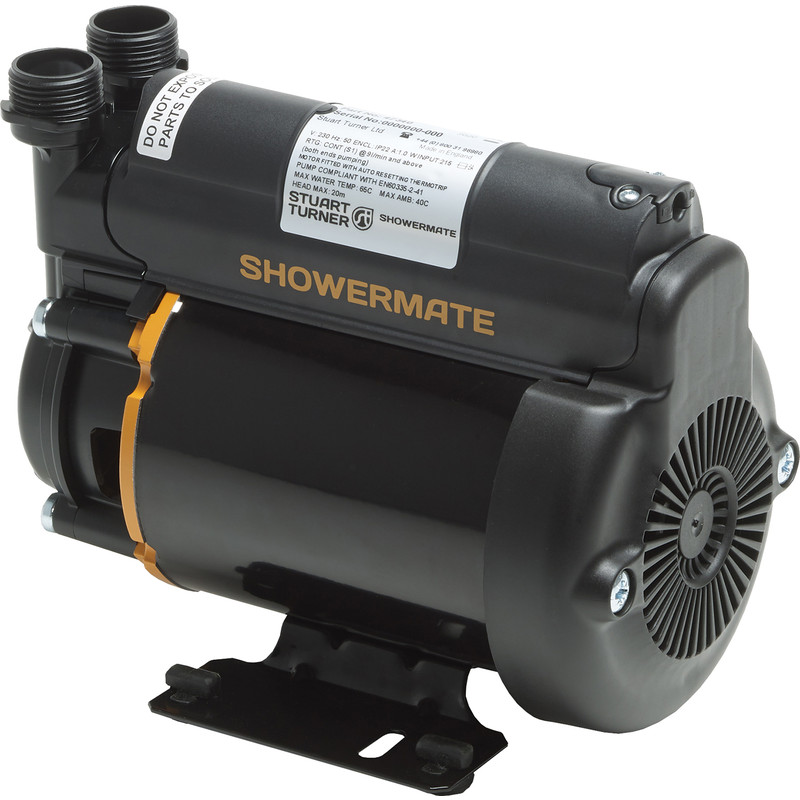
Single Impeller Shower Pumps
Single impeller shower pumps are perfect for pumping one feed to increase the pressure of either the hot or cold water supply. They are most commonly used to boost water flow to systems that already have good water pressure from the cold tap, and only the hot tap needs boosting.
Single impeller shower pumps with a positive head shouldn't be used with mixer taps or showers because this could cause an imbalance within the mixer. If you need to boost hot water against cold water coming from the mains supply, a universal (negative head), single pump should be used to balance the pressure at the mixer valves.
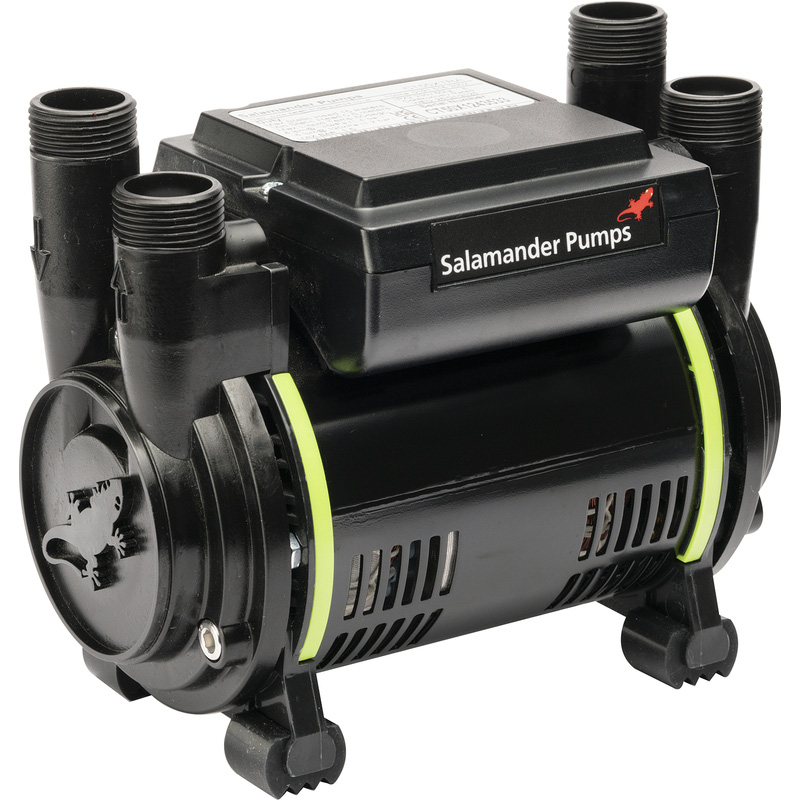
Twin Impeller Shower Pumps
Twin impeller shower pumps have the ability to boost the pressure of both the hot and cold water supply. With two impellers, hot and cold water enters and exits from opposite sides of the pump. The result is a much wanted feature— a strong and powerful spray from the shower head that guarantees an invigorating shower.
If you want to boost hot and cold gravity-fed water, a twin impeller shower pump is perfect.
Types of Shower Pumps
The type of shower pump head determines how the shower pump turns on – whether it is activated by the natural flow of water or by a drop in water pressure in the system. Your choice will depend on the natural flow rate of your system without a pump.
Positive Head Shower Pumps
Positive head shower pumps use gravity and a flow switch to turn on the pump. Water flows into the pump at a minimum rate of 2 litres a minute which lifts the float switch inside the pump and kickstarts the impellers. Positive head shower pumps are used if your shower head is at least 600mm lower than the base of your cold water tank. You must also have a natural flow rate of at least 2 litres per minute for hot and cold water, or 4 litres per minute for mixed outlets.
With positive head shower pumps, it’s important to measure the natural water flow from the hot and cold outlets to make sure they have a minimum flow of 2 litres a minute from the individual feeds.
Negative Head Shower Pumps
Negative head shower pumps, also known as universal shower pumps, work using a pressure sensor in the pump. This monitors when the pressure drops – such as when the shower turns on – and the impeller starts working. These pumps are used when the natural flow is less than what is needed for a positive head pump (2 litres per minute from both the hot and cold outlet), or when the top of the shower head is less than 600mm below the base of the cold water tank.
There's nothing stopping you from using negative head shower pumps when a positive head pump can also be used, which is why they’re known as universal. If the shower or the outlets haven’t yet been installed, fitting a universal, negative head shower pump guarantees it will be suitable for your needs.
Centrifugal vs Regenerative Shower Pumps
Shower pumps increase the water pressure in one of two ways: using a centrifugal force, or a regenerative pressure created by whipping the water around and then using a stripping block to physically strip the water out of the pump and to your shower and taps.
Centrifugal Shower Pumps
Centrifugal pumps use centrifugal force to force the water out of the impeller. Centrifugal force is the idea that an object (such as water) will always try to move away from the centre of a circle. This means as water flows into the rotating impeller, it ‘escapes’ at a higher force than it went in.
Centrifugal shower pumps are ideal if you’re after a reliable, powerful and relatively quiet shower pump. These pumps are highly flow efficient, meaning that are more outlets are opened, the drop in pressure is less noticeable and quieter compared to regenerative pumps.
Regenerative Shower Pumps
Regenerative shower pumps have a water wheel that rotates at one or both ends of the impeller. Water enters the pump and is whipped along by the impeller which increases the pressure. The energy created during this process is used to draw more water into the pump.
Regenerative pumps are a perfect cost-effective solution to improve water pressure to your shower.
Key Shower Pump Considerations
Max Pressure
Shower pump pressure is measured in 'bar' and the higher the number, the greater the max pressure. 1.0 - 1.5 bar pumps are used for boosting pressure with small-to-normal-sized shower heads. A 2.0 bar pump will improve the pressure for two to three showers or taps, whilst 2.5 bar pumps are for power showers and large shower heads. 3.0 bar or higher and the pump will improve the pressure of robust power showers, very large shower heads, and invigorating body jets.
IP Ratings
You’ll find all shower pumps will have an IP – or Ingress Protection – rating. This determines the level of protection against liquids and solids which could cause damage. Because shower pumps deal closely with water, they must have an IP rating of at least IPX4, which means they’re protected from being damaged by splashing water but will not be protected from being completely submerged.

